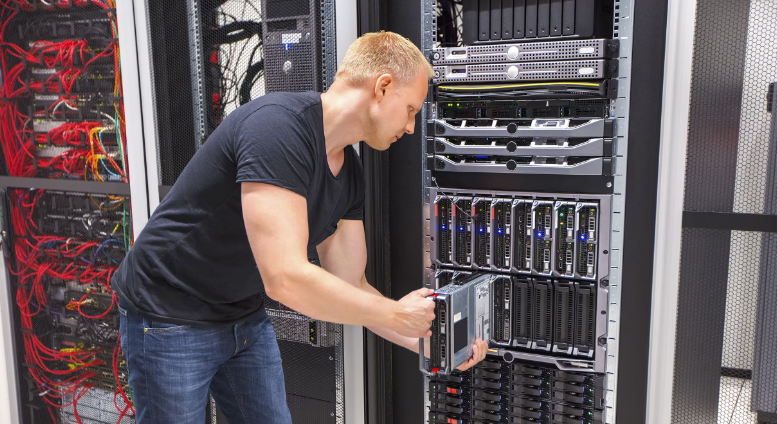Advantages and Limitations of a Blade Server
A blade server is a compact, self-contained server that contains multiple server modules in a chassis and is widely used in data centers. Various types of cards can be plugged into a standard-height rack-mount chassis for high-availability and high-density purposes, a low-cost hahd (high-availability and high-density) server platform.

Whether standalone or rack-mounted, the chassis provides power, and each blade server has its own CPU, memory, and storage. In contrast to blade computers, blade servers typically provide their own management system, which may include network or storage switches.
Why do small and medium-sized enterprises choose blade servers?
One of the biggest features of blade servers is high-density integration, which makes the internal structure of the server more compact, thereby simplifying wiring, storage and maintenance time. Users can manage, configure and deploy all blade servers in a unified manner, which saves the company a lot of manpower and financial resources.
Blade servers are more reliable than individual servers, with options such as redundant power supplies and high-availability components. Blade servers may not be cheap, and may even be more expensive, than comparable rack or tower servers, but as long as the system is fully utilized, blade servers may save money over the life cycle.
It can be seen that whether the blade server system is suitable for an enterprise has little to do with the type or scale of the enterprise itself, but depends on the IT needs of the enterprise. If the enterprise only buys one or two servers a year, it is a bit of a luxury to choose a blade server, but if it wants to buy a cluster of 4 to 12 or more rack servers, it is worthwhile to replace it with a blade server.
What are the limitations of blade servers?
Although the density of the blade system is very high, you often need a fully enclosed and heavy cabinet to carry it. Therefore, the load-carrying requirements for the cabinet will be relatively high. Because it is a high-density cabinet, the requirements for blade servers are relatively high in terms of heat dissipation, and the cost in this regard cannot be ignored.
The advantages of blade servers
Easy to manage
Easy failover and load balancing. While these functions can be performed on other traditional servers, blade servers are designed to simplify these tasks. Because of its leaner infrastructure, work becomes easier and simpler. Additionally, it has self-diagnostic capabilities, which make it easier to identify and fix problems when hardware fails.
Simple settings
Blade servers are small servers that are easy to set up. Unlike rack and stand-alone servers, blade servers contain only a central processing unit, memory, network adapters, and integrated input/output ports. Other components, such as cooling equipment, storage, and power converters, are in the chassis.
This structure makes it easier to place servers in ideal locations, which also allows for a minimalist and more organized server room. Cabling is also an advantage when using blade servers, as there is less wiring compared to multiple separate servers that need to be connected to the network.
Easy to integrate
Another advantage of blade servers is that only one chassis is required to house multiple servers. Because these multiple servers can share basic components and power, other resources such as equipment and storage can be combined.
Disadvantages of blade servers
Temperature control
Unlike standalone servers, which can be placed throughout a building and have no specific requirements for temperature control, blade servers have a tendency to heat up. This is due to high heat dissipation due to compactness. Server blades can be damaged without proper cooling.
Cost
From purchase to configuration, installing blade servers is not cheap. It depends on the model and brand of blade server that the company intends to use, including the configuration. In addition, there are training costs and installation costs for information technology personnel, the initial cost of blade servers is very high, and the maintenance cost is also high.



